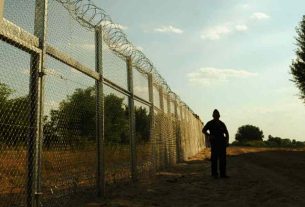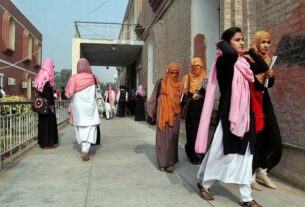Wed 06 October 2021:
The discovery of genetic traces in the body of a 7,000-year-old teenager provides the first evidence that early people in Indonesia mixed with individuals from far away Siberia much earlier than previously assumed.
According to the Reuters news agency, the findings of a study published in the scientific journal Nature in August after analysis of the deoxyribonucleic acid (DNA), or genetic fingerprint, of a woman who was given a ritual burial in an Indonesian cave could change theories about early human migration in Asia.

Scientists conduct excavation work in Indonesia’s South Sulawesi. File photo: Handout
“There is the possibility that the Wallacea region could have been a meeting point of two human species, between the Denisovans and early homo sapiens,” said Basran Burhan, an archaeologist from Australia’s Griffith University.
Burhan, one of the researchers, was referring to the region of Indonesia that includes South Sulawesi, where the body was discovered in the Leang Pannige cave systems, buried with boulders in its hands and on its pelvis.

The Denisovans were an ancient human race called after a cave in Siberia where their skeletons were discovered in 2010. Scientists know very little about them, and even the smallest characteristics of their appearance are unknown.
The DNA from Besse, as the researchers named the young woman in Indonesia, using the term for a newborn baby girl in the regional Bugis language, is one of the few well-preserved specimens found in the tropics.
NEW HUMAN LINEAGE DISCOVERED FROM DNA OF GIRL WHO DIED 7,200 YEARS AGO
It showed that while she was descended from the Austronesian people common to Southeast Asia and Oceania she also had Denisovan genetic traces, the scientists said.
“Genetic analyses show that this pre-Neolithic forager … shares most genetic drift and morphological similarities with present-day Papuan and Indigenous Australian groups,” they said in the paper.
The remains are currently stored at a university in the city of Makassar in South Sulawesi.
Scientists previously believed that individuals from North Asia, such as the Denisovans, arrived in Southeast Asia around 3,500 years ago.
Besse’s DNA casts doubt on hypotheses about early human migration patterns and may shed light on the origins of Papuans and Indigenous Australians who share Denisovan DNA.
“Theories about migration will change, as theories about race will also change,” said Iwan Sumantri, a lecturer at Hasanuddin University in South Sulawesi, who is also involved in the project.
Besse’s remains provide the first sign of Denisovans among Austronesians, who are Indonesia’s oldest ethnic grouping, he added.
“Now try to imagine how they spread and distributed their genes for it to reach Indonesia,” Sumantri said.
(with Agencies) | Photo: The compressed skull and teeth of a young woman were found inside an Indonesian cave.Credit: University of Hasanuddin
_____________________________________________________________________________
FOLLOW INDEPENDENT PRESS:
TWITTER (CLICK HERE)
https://twitter.com/IpIndependent
FACEBOOK (CLICK HERE)
https://web.facebook.com/ipindependent
Think your friends would be interested? Share this story!





